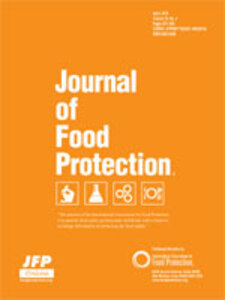Budiati, Titik and Rusul, Gulam and Wan-Abdullah, Wan Nadiah and Chuah, Li-Oon and Ahmad, Rosma and Thong, Kwai Lin (2016) Genetic Relatedness of Salmonella Serovars Isolated from Catfish (Clarias gariepinus) and Tilapia (Tilapia mossambica) Obtained from Wet Markets and Ponds in Penang, Malaysia. Journal of Food Protection, 79 (4). pp. 659-665. ISSN 0362028X
|
Text
Paper 2.0 (Article Food Protection).pdf Download (3MB) |
||
![[img]](https://sipora.polije.ac.id/19193/3.hassmallThumbnailVersion/Paper%202.1%20%28Cover%20journal%20of%20food%20protection%29.jpeg)
|
Image
Paper 2.1 (Cover journal of food protection).jpeg Download (7kB) | Preview |
|
|
Text
Paper 2.2 (Editorial Board Food Protection).pdf Download (15MB) |
||
|
Text
Paper 2.3 (Table of content Food Protection).pdf Download (962kB) |
||
|
Text
2.5 Turnitin.pdf Download (2MB) |
||
|
Text (Hasil Peer Review)
Genetic relatedness of Salmonella serovars isolated from catfish (Clarias gariepinus) and tilapia (Tilapia mossambica) obtained from wet markets and ponds in Penang, Malaysia.pdf Download (70kB) |
Abstract
A total of 43 Salmonella enterica isolates belonging to different serovars (Salmonella Albany, Salmonella Agona, Salmonella Corvallis, Salmonella Stanley, Salmonella Typhimurium, Salmonella Mikawasima, and Salmonella Bovismorbificans) were isolated from catfish (Clarias gariepinus) and tilapia (Tilapia mossambica) obtained from nine wet markets and eight ponds in Penang, Malaysia. Thirteen, 19, and 11 isolates were isolated from 9 of 32 catfish, 14 of 32 tilapia, and 11 of 44 water samples, respectively. Fish reared in ponds were fed chicken offal, spoiled eggs, and commercial fish feed. The genetic relatedness of these Salmonella isolates was determined by random amplified polymorphic DNA PCR (RAPD-PCR) using primer OPC2, repetitive extragenic palindromic PCR (REP-PCR), and pulsed-field gel electrophoresis (PFGE). Composite analysis of the RAPD-PCR, REP-PCR, and PFGE results showed that the Salmonella serovars could be differentiated into six clusters and 15 singletons. RAPD-PCR differentiated the Salmonella isolates into 11 clusters and 10 singletons, while REP-PCR differentiated them into 4 clusters and 1 singleton. PFGE differentiated the Salmonella isolates into seven clusters and seven singletons. The close genetic relationship of Salmonella isolates from catfish or tilapia obtained from different ponds, irrespective of the type of feed given, may be caused by several factors, such as the quality of the water, density of fish, and size of ponds.
| Item Type: | Article |
|---|---|
| Subjects: | 140 - Rumpun Ilmu Tanaman > 160 - Teknologi dalam Ilmu Tanaman > 165 - Teknologi Pangan dan Gizi |
| Divisions: | Arsip Penting Dosen > Bahan P1 |
| Depositing User: | Dr. Titik Budiati |
| Date Deposited: | 30 Mar 2023 06:24 |
| Last Modified: | 13 Jun 2023 13:45 |
| URI: | https://sipora.polije.ac.id/id/eprint/19193 |
Actions (login required)
 |
View Item |


